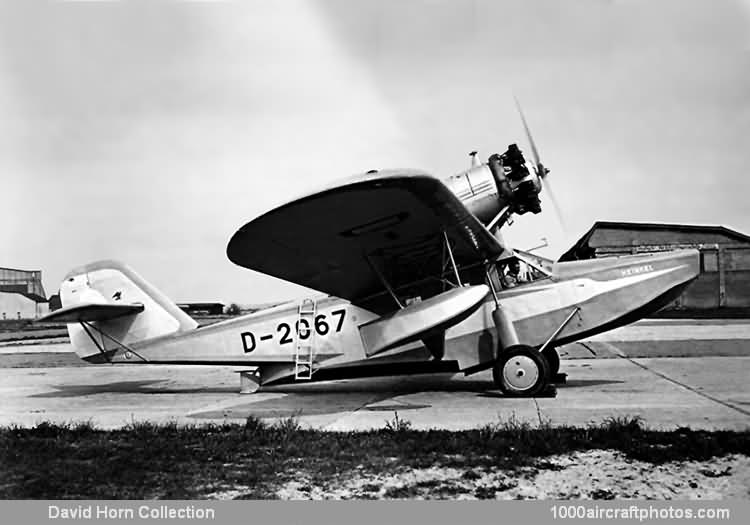07/31/2014. Remarks by Johan Visschedijk: "During a meeting in Sankt Moritz, Switzerland in the winter of 1929-1930, Anthony Fokker told Ernst Heinkel about the problems he had building a metal amphibian aircraft light enough to have an efficient load capacity. Upon return to Warnemünde, Germany, Heinkel immediately started on the development of such an aircraft. As Heinkel had no experience in metal construction, and as he aimed at the American market, he hired the American engineer Richard M. Mock (reportedly experienced in metal aircraft construction), to supervise manufacturing.
The six-seat aircraft was of all-metal construction, with exception of the wooden wing spars and the fabric covered wing and tail. Power plant was a 400 hp Pratt & Whitney Wasp nine-cylinder, air-cooled radial engine. When first flown in this configuration in April 1930, the aircraft failed to take off with more than four persons aboard.
Subsequently the boat form of the aircraft was optimized in a water basin of the hydronautical test institute in Hamburg, including an enlarge hull step. The tail surfaces were redesigned, the engine was replaced by a 425 hp Wasp, and the fixed tail wheel was replaced by a skid integrated in the water rudder, as shown above. The aircraft was flown again in December 1930, however, its performance was still unsatisfying.
Heinkel continuously experimented to improve the performance, the engine mounting, exhaust and cowling were modified and stabilization fins were placed on top of the tail plane. In May the aircraft was registered D-2067 and subsequently it was displayed at shows at Stockholm, Sweden and Copenhagen, Denmark. By August 1931 the tail skid had been replaced by a tail wheel again.
Finally Heinkel sold the aircraft to the DVS in April 1933. Reregistered D-OJAS the aircraft served with DVS for four years, after a crash landing on July 30, 1937, de aircraft was declared damaged beyond repair and subsequently scrapped."
